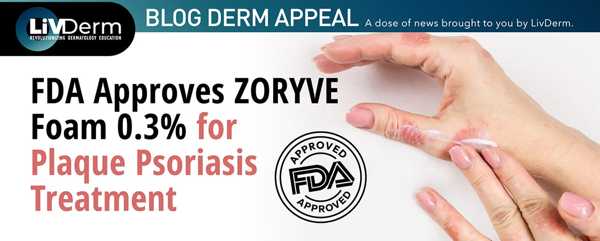What Do CNA Online Courses Include?
Thyroid Eye Disease (TED): Early Detection, Symptoms, and Treatment Options
Thyroid Eye Disease (TED) is an autoimmune condition that affects the eyes, often associated with thyroid disorders such as Graves' disease. Although TED is a chronic condition, early diagnosis and intervention can significantly improve outcomes and prevent long-term complications. This article explores the symptoms, risk factors, and treatment approaches for managing TED, offering a comprehensive guide to help individuals better understand and address this eye condition.
Thyroid Eye Disease (TED) is an autoimmune condition that affects the eyes, often associated with thyroid disorders such as Graves' disease. Although TED is a chronic condition, early diagnosis and intervention can significantly improve outcomes and prevent long-term complications. This article explores the symptoms, risk factors, and treatment approaches for managing TED, offering a comprehensive guide to help individuals better understand and address this eye condition.

What Is Thyroid Eye Disease?
TED occurs when the immune system attacks the tissues, muscles, and fat behind the eyes, leading to inflammation and swelling. The condition is commonly linked to Graves' disease, an autoimmune disorder causing hyperthyroidism, but it can also affect individuals with hypothyroidism or even those with normal thyroid function.
TED often presents as mild eye discomfort but can progress to more severe symptoms, leading to significant vision impairment if left untreated. Recognizing TED symptoms early is crucial for preventing severe complications, including vision loss.
Early Symptoms of Thyroid Eye Disease
In the early stages, TED symptoms may be mild and sometimes mistaken for other eye conditions. Key early warning signs include:
• Swelling or Puffiness: Around the eyelids, often resulting in a tired or puffy appearance.
• Dry, Gritty Eyes: Feeling of dryness or irritation, commonly confused with dry eye syndrome or allergies.
• Light Sensitivity (Photophobia): Discomfort or pain when exposed to bright light.
• Watery Eyes: Excessive tearing that can be a result of inflammation.
• Pressure Behind the Eyes: A feeling of fullness or discomfort behind the eyes, often described as pressure or heaviness.
If these symptoms persist or worsen, seeking medical evaluation is important to prevent disease progression and avoid complications.
Progression of Thyroid Eye Disease: From Mild to Severe
As TED advances, inflammation and swelling can become more pronounced. Moderate to severe symptoms include:
• Proptosis (Bulging Eyes): Caused by increased pressure in the eye socket, leading to protrusion of the eyes.
• Eyelid Retraction: The eyelids may pull back, creating a wide, staring appearance.
• Eye Redness and Swelling: Persistent redness and swelling in and around the eyes due to inflammation.
• Eye Muscle Involvement: Difficulty moving the eyes, often accompanied by pain when looking in different directions.
• Double Vision (Diplopia): Results from inflammation of the eye muscles, causing misalignment and impaired focus.
Severe Symptoms Requiring Urgent Attention
In advanced TED, the condition can lead to serious complications, including optic nerve compression, which can result in permanent vision loss. Seek immediate medical help if you experience:
• Sudden or Worsening Double Vision
• Blurred or Loss of Vision
• Severe Eye Pain
• Difficulty Closing the Eyes: Leading to excessive dryness and risk of corneal damage.
• Loss of Peripheral Vision or Changes in Color Perception
Causes and Risk Factors for Thyroid Eye Disease
While the exact cause of TED is not fully understood, several risk factors increase the likelihood of developing the disease:
• Thyroid Disorders: The most significant risk factor is Graves' disease, though TED can also affect individuals with hypothyroidism or normal thyroid function.
• Smoking: Smoking significantly increases the risk and severity of TED by worsening inflammation and tissue damage.
• Family History: A family history of autoimmune diseases increases the likelihood of developing TED.
• Age and Gender: TED is more common in women, especially those aged 40 to 60. However, men may experience more severe symptoms.
• Radioactive Iodine Therapy: Some individuals treated for hyperthyroidism with radioactive iodine may develop or worsen TED.
Diagnosing Thyroid Eye Disease
Early diagnosis is critical for preventing complications. Diagnostic methods include:
• Clinical Examination: Assessing eye movement, eyelid positioning, and eye health.
• Thyroid Function Tests: Blood tests to measure thyroid hormone levels and check for autoimmune markers.
• Imaging: CT scans or MRIs help evaluate the degree of inflammation and eye muscle involvement.
• Visual Field Tests: These tests check for changes in peripheral vision, color vision, and optic nerve function.
Treatment Options for Thyroid Eye Disease
Treatment for TED varies depending on the severity of the disease and whether it is active or in remission.
1. Lifestyle and Self-Care Measures for Mild TED
• Lubricating Eye Drops: Helps alleviate dryness and irritation.
• Sunglasses: Protects eyes from light sensitivity and environmental irritants.
• Elevated Pillow: Sleeping with your head elevated can reduce puffiness.
• Smoking Cessation: Stopping smoking reduces inflammation and can prevent further disease progression.
• Thyroid Function Management: Keeping thyroid hormone levels stable is crucial for managing TED.
2. Medical Treatments for Moderate to Severe TED
• Corticosteroids: Reduce inflammation and swelling in the eyes, commonly used for active TED.
• Tepezza (Teprotumumab): An FDA-approved drug specifically designed to reduce eye bulging and double vision.
• Radiation Therapy: Targeted radiation can help reduce inflammation in the eye muscles and tissues.
3. Surgical Options for Severe TED
• Orbital Decompression Surgery: Reduces pressure by expanding the eye socket and correcting bulging eyes.
• Strabismus Surgery: Corrects eye muscle misalignment, addressing double vision.
• Eyelid Surgery: Improves eyelid closure, preventing excessive dryness and exposure to the environment.
Can Thyroid Eye Disease Be Prevented?
While TED cannot always be prevented, certain measures can reduce the risk and severity of symptoms:
• Quit Smoking: This is the most effective way to reduce TED severity.
• Manage Thyroid Function: Regular check-ups and early detection of thyroid imbalances can help reduce TED risks.
• Protect Your Eyes: Use sunglasses, lubricating drops, and limit screen time to reduce irritation.
• Stay Informed: Discuss early screening and prevention strategies with your doctor if you have a thyroid disorder.
Conclusion
Thyroid Eye Disease can significantly impact eye health and vision, but with early detection and appropriate management, many individuals can live with the disease and maintain a good quality of life. Regular thyroid check-ups, lifestyle adjustments, and medical interventions are essential for managing TED and minimizing its effects on eye health. If you experience any symptoms of TED, it is important to seek medical advice promptly to prevent further complications.











